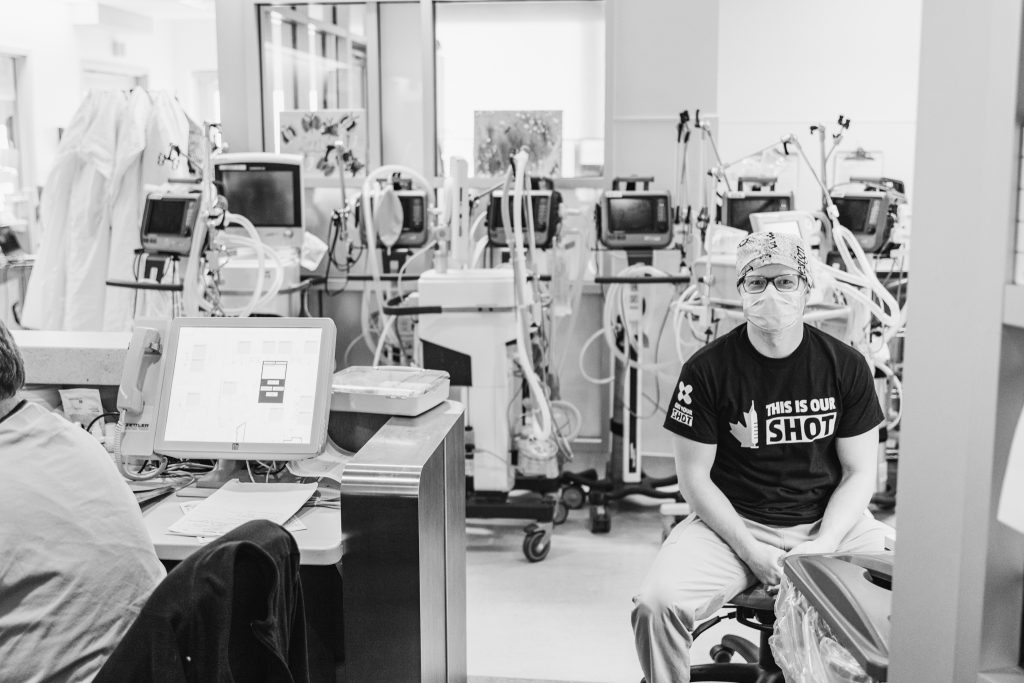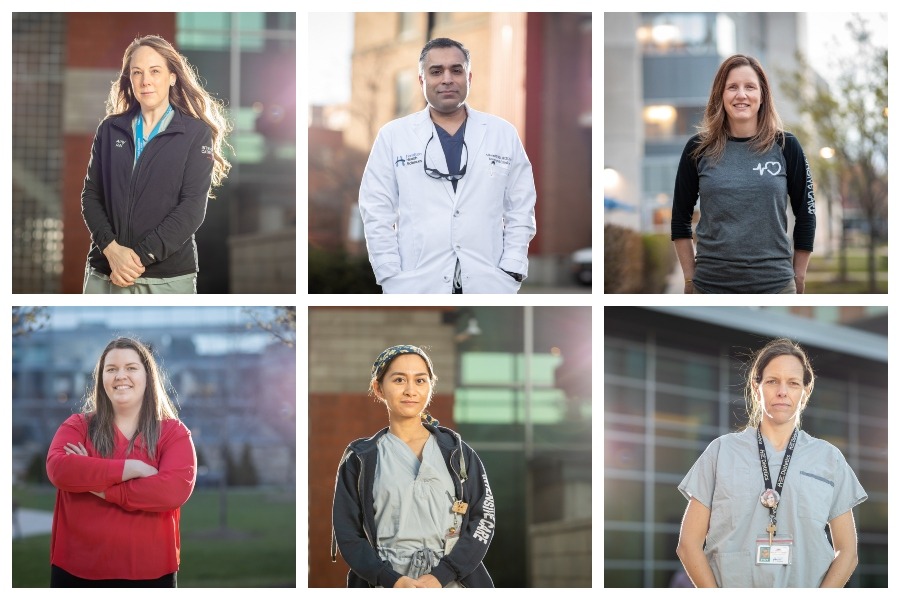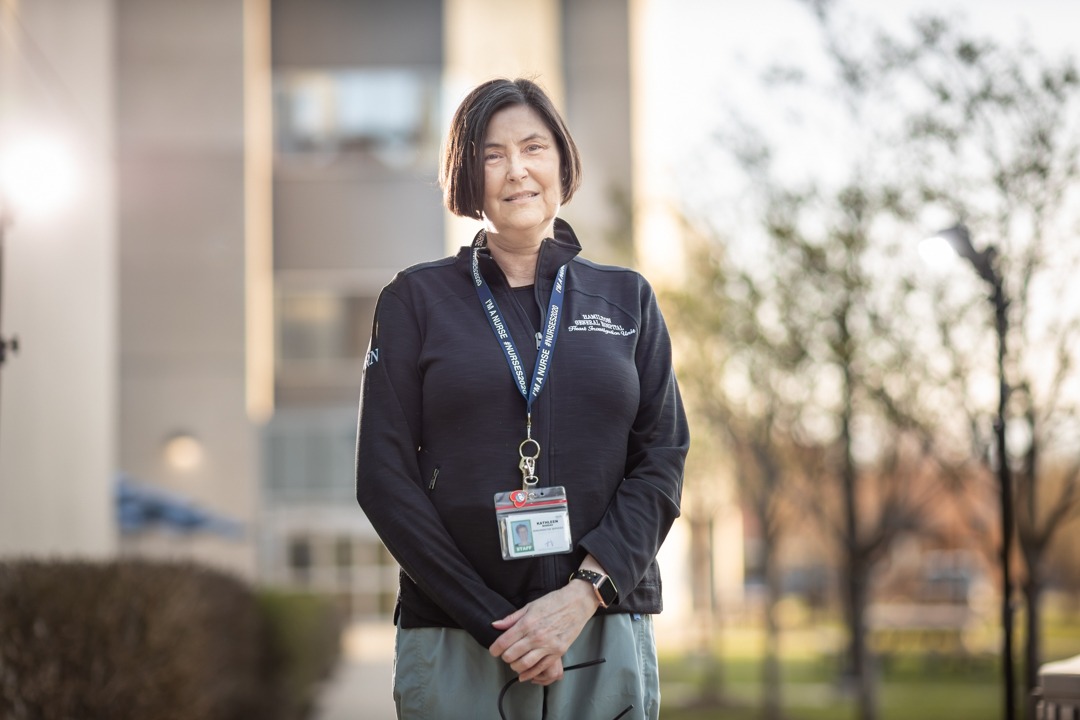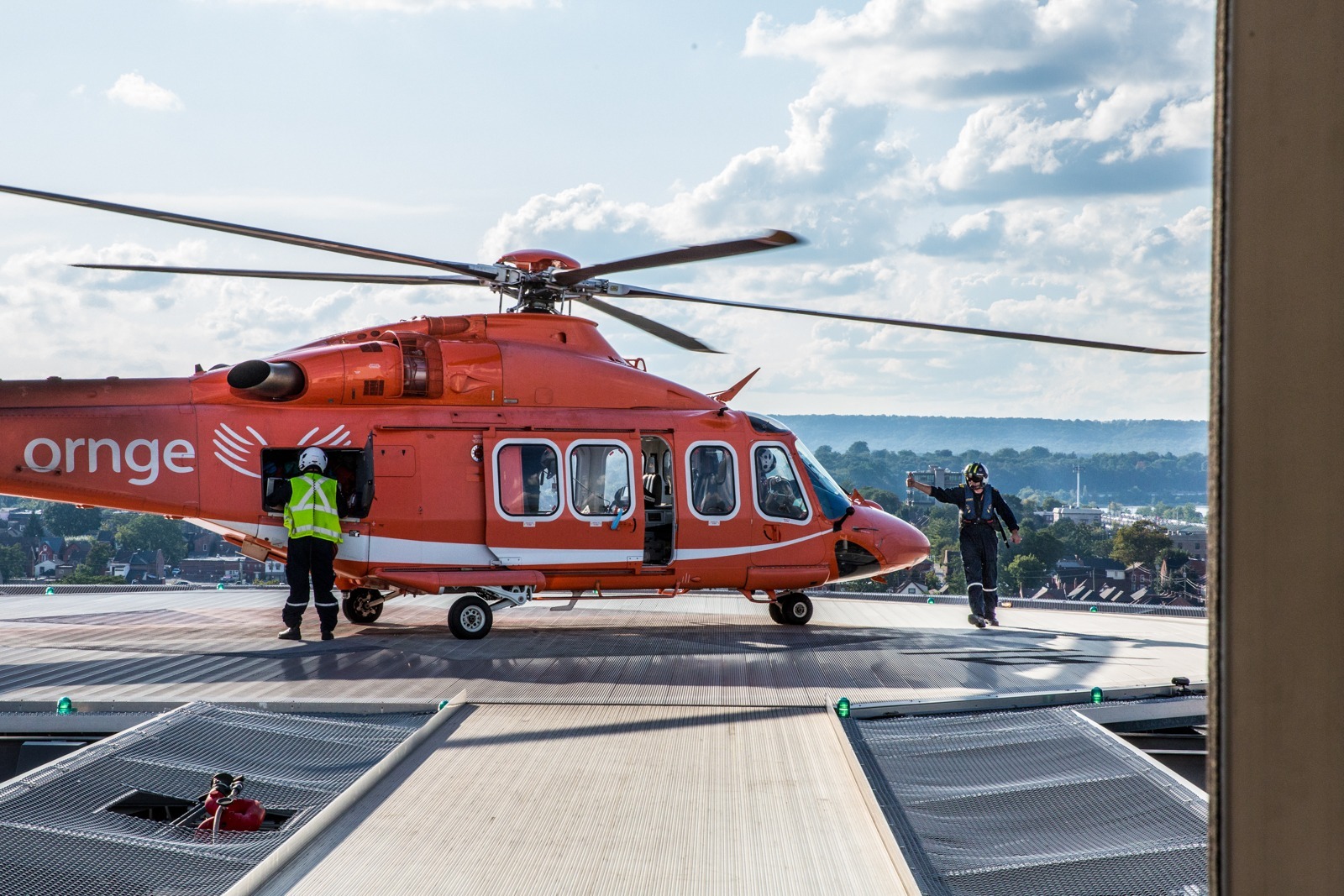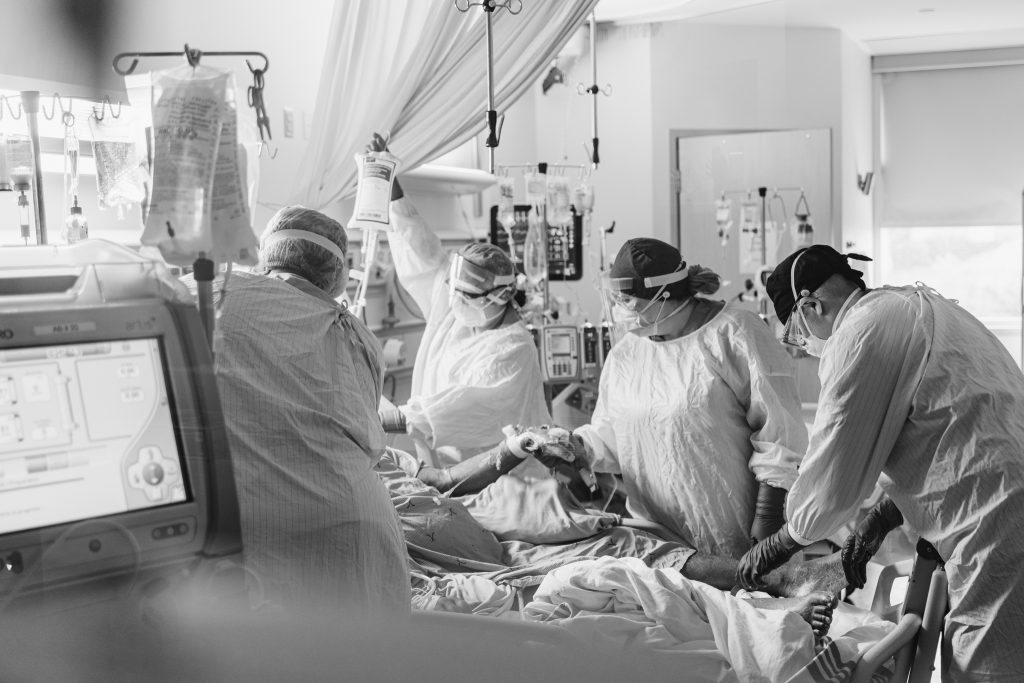
Inside the ICU During COVID-19: photos from healthcare providers
The first half of 2021 brought some of the highest numbers of patients with COVID-19 to our intensive care units (ICUs). At points, the additional 43 per cent surge capacity added was just enough to provide space and staff to care for the sickest patients. Our ICU staff worked tirelessly throughout to provide care to those who needed it most.
During those same six months, the Province of Ontario issued a stay-at-home order to prevent the further spread of COVID-19 in our community. This, along with hospital infection prevention protocols, presented challenges for our team to document the unprecedented events in the ICU with our usual staff photographers. Instead, respiratory technologist Jenn LeRoux, Dr. Bram Rochwerg, and Dr. Paul Engels are three healthcare providers who offered to photograph some scenes from inside the ICU where they were already stationed. Below are only a few images that capture the pandemic at its peak in some of Hamilton’s intensive care units.
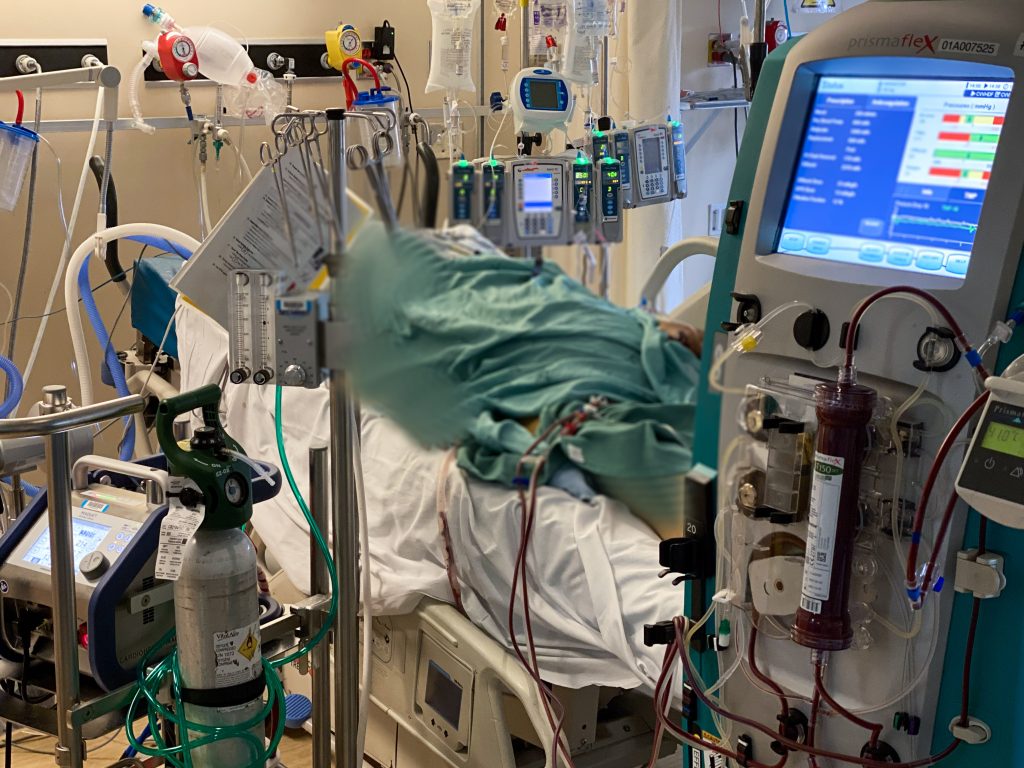
A patient with COVID, who is intubated and attached to a ventilator which supports the lungs, as well as attached to a machine (the green one on the right) that replaces the function of the kidneys (COVID has temporarily shut down the functioning of the kidneys), as well as attached to an ECMO machine (extra-corporeal membrane oxygenation) on the left (which provides additional life-support as the ventilator itself is not sufficient enough to support the patient’s needs as the COVID is so severe); the patient is also connected to numerous intravenous lines which provide powerful and necessary medications to control their heart and blood pressure, provide medications to treat pain and discomfort, and provide antibiotics to treat additional infections that commonly develop in patients with severe COVID. (Photo by Dr. Paul Engels at the Hamilton General Hospital)
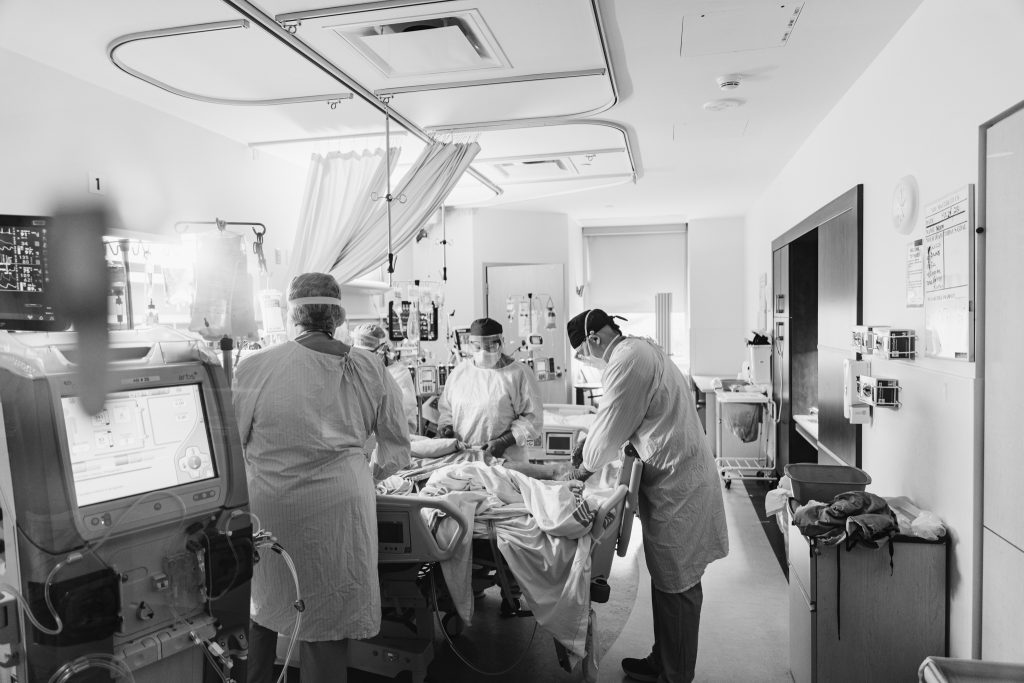
The COVID proning team (RNs, RTs, PSWs) in full PPE prepare to turn a critically ill COVID patient who is also receiving continuous renal replacement therapy. Carefully turning COVID patients from their backs to lying face-down can help with treatment. (Photo by Dr. Bram Rochwerg at the Juravinski Hospital)
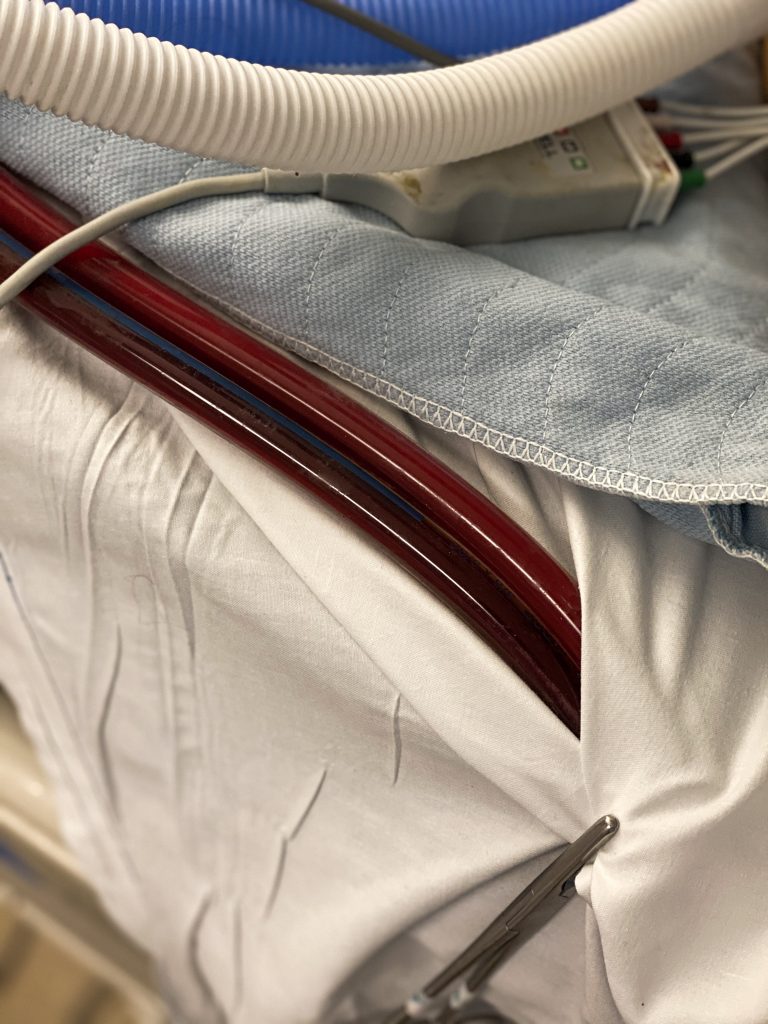
This is blood in the ECMO circuit, with the darker blood being in the tubing drawing the blood from the patient and the brighter red blood being the well oxygenated blood from the ECMO machine being returned to the patient. (Photo by Dr. Paul Engels at the Hamilton General Hospital)
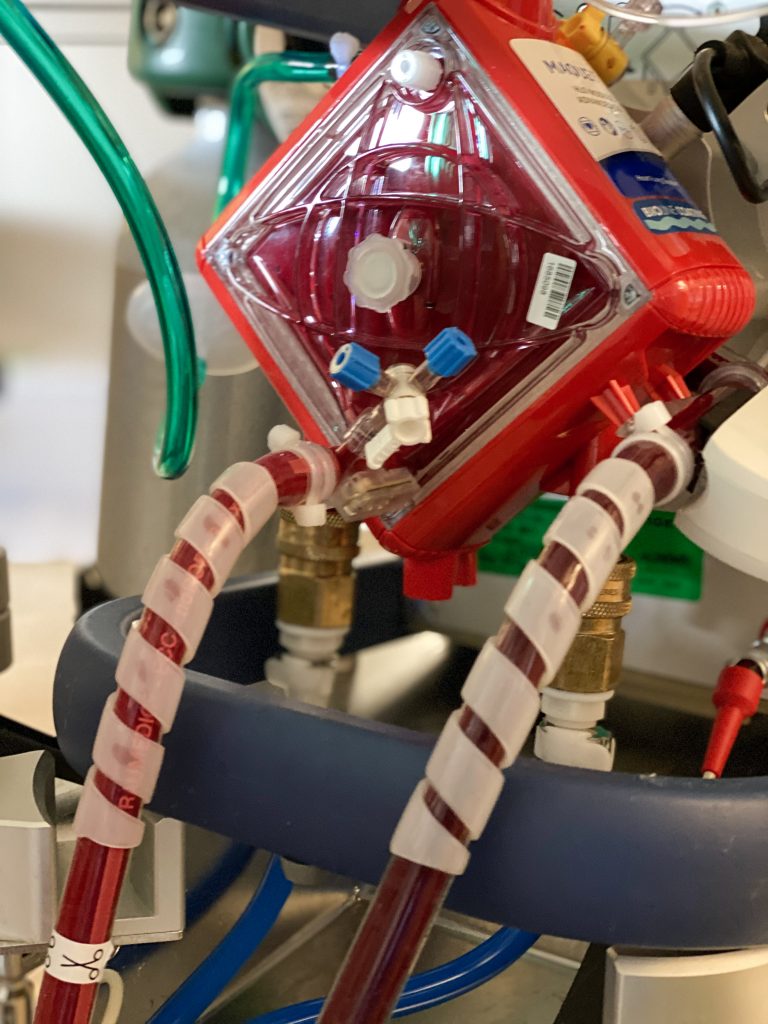
This is the other side of the ECMO machine, which takes the patient’s de-oxygenated (dark) blood and increases the oxygen content (the well oxygenated blood is bright red) and then returns it to the patient. (Photo by Dr. Paul Engels at the Hamilton General Hospital)

